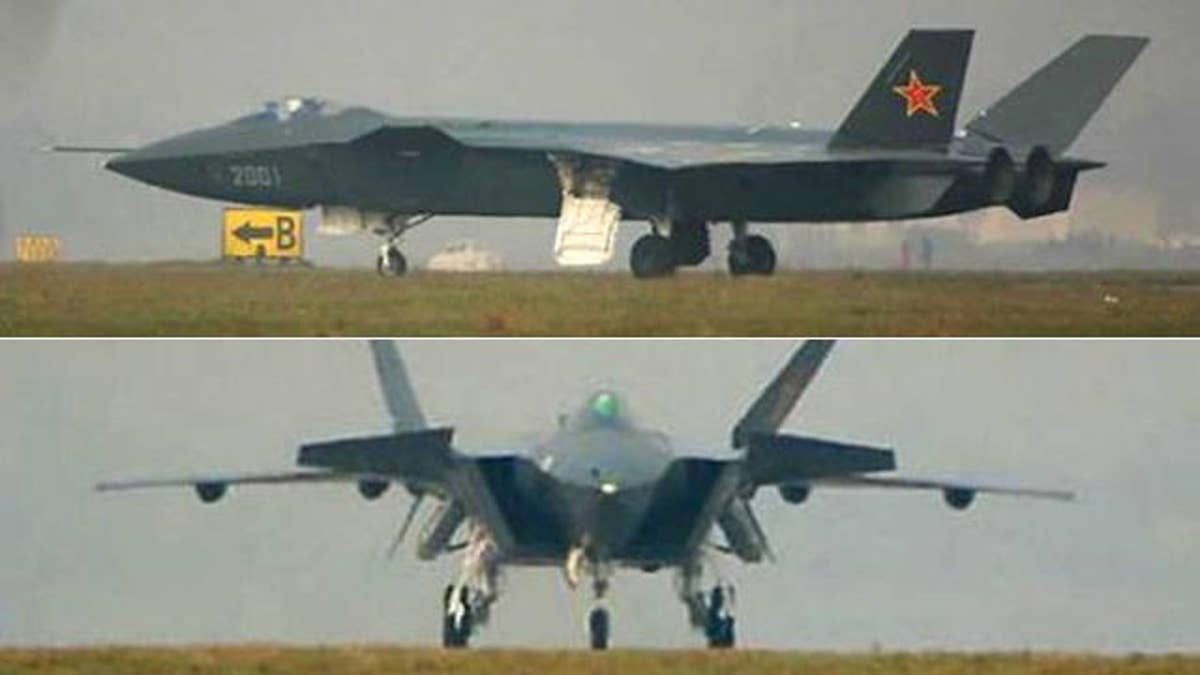
BEIJING -- An official Chinese newspaper on Tuesday dismissed a report that the country used technology taken from a downed U.S. airplane in its own stealth fighter program.
Chinese officials this month staged the first-known test flight of the J-20 prototype stealth fighter that could one day challenge American air superiority.
The flight came during a rare visit to China by U.S. Defense Secretary Robert Gates and caught many defense analysts by surprise, seeming to indicate that China was acquiring cutting-edge technology more rapidly than previously thought.
China says the plane is based entirely on indigenous designs, and the Global Times on Tuesday quoted an unidentified Defense Ministry official as dismissing an Associated Press report citing Balkan military officials and other experts saying that China likely gleaned some of their technological know-how from an American F-117 Nighthawk shot down over Serbia in 1999.
"It's not the first time foreign media has smeared newly unveiled Chinese military technologies. It's meaningless to respond to such speculations," the official was quoted as saying by the newspaper, which is published by the ruling Communist Party's flagship People's Daily.
Calls to the Defense Ministry's spokesman's office rang unanswered Tuesday.
The Defense Ministry has commented little on the test flight other than to assert that China continues to arm for defensive purposes only.
The U.S. fields the only stealth fighter in active service, the F-22 Raptor, the successor to the Nighthawk. The U.S. is also employing stealth technology on the F-35 Joint Strike Fighter, while Russia's Sukhoi T-50's stealth fighter made its maiden flight last year and is set to enter service in about four years' time.
No direct evidence or specific allegation has been offered on how China would have exploited the downed plane, although Balkan military officials say Chinese agents hunted for pieces of the F-117 wreckage and may have shared intelligence with their Serbian allies.
Western diplomats have said China maintained an intelligence post in its Belgrade embassy during the Kosovo war. The building was mistakenly struck by U.S. bombers in May 1999, killing three people inside, and cementing firm Chinese opposition to the NATO air campaign.
Serbia shot down the F-117 in March of that year, marking the first time one of the much-touted "invisible" fighters had ever been hit. The Pentagon believed a combination of clever tactics and sheer luck allowed a Soviet-built SA-3 missile to bring down the jet.
"At the time, our intelligence reports told of Chinese agents crisscrossing the region where the F-117 disintegrated, buying up parts of the plane from local farmers," Adm. Davor Domazet-Loso, Croatia's military chief of staff during the Kosovo war, told the AP.
"We believe the Chinese used those materials to gain an insight into secret stealth technologies ... and to reverse-engineer them," Domazet-Loso said in a telephone interview.
Parts of the downed F-117 wreckage -- such as the left wing with US Air Force insignia, the cockpit canopy, ejection seat, pilot's helmet and radio -- are exhibited at Belgrade's aviation museum.
While not completely invisible to radar, the F-117'S shape and radar-absorbent coating made detection extremely difficult. The radar cross-section was further reduced because the wings' leading and trailing edges were composed of nonmetallic honeycomb structures that do not reflect radar rays.
Experts say insight into this critical technology, and particularly the plane's secret radiation-absorbent exterior coating, would have significantly enhanced China's stealth know-how.
The newspaper report refuting the allegations that China used the F-117 technology comes one day after a U.S. federal judge sentenced an engineer of an earlier generation of stealth aircraft, the B-2 bomber, to 32 years in prison for selling military secrets to China.
Noshir Gowadia, 66, who was born in India, was convicted in August on 14 counts, including communicating national defense information to aid a foreign nation and violating the arms export control act.
Prosecutors said Gowadia helped China design a stealth cruise missile to get money to pay the $15,000-a-month mortgage on his luxurious multimillion dollar home overlooking the ocean on the Hawaiian island of Maui. They say he pocketed at least $110,000 by selling military secrets.
The defense argued Gowadia provided only unclassified information to China.
